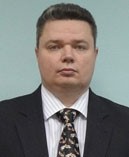ИССЛЕДОВАНИЕ ИНТЕНСИВНОСТИ ДВИЖЕНИЯ ГОРОДСКОГО ПАССАЖИРСКОГО ТРАНСПОРТА ЧЕРЕЗ ОСТАНОВОЧНЫЕ ПУНКТЫ
Аннотация
В связи с большим разнообразием городского пассажирского транспорта, как по видам, так и по вместимости возникает вопрос о том, влияет ли данное разнообразие на пропускную способность остановочных пунктов. Исследования интенсивности движения городского пассажирского транспорта по пятнадцати остановочным пунктам позволили установить, что: количество маршрутных такси меняется по времени, не подчиняясь синусоидальной закономерности остальных видов городского пассажирского транспорта, что говорит о влиянии экономического фактора связанного только с целью извлечения прибыли; интенсивность движения городского пассажирского транспорта через остановочный пункт показывает преобладание в нем маршрутных такси, что является основной причиной возникновения заторов на остановочных пунктах и регулируемых перекрестках; движение различных видов городского пассажирского транспорта через остановочный пункт осуществляется в случайном порядке, что так же является причиной возникновения заторов.
Цель – определение интенсивности движения городского пассажирского транспорта через остановочные пункты путем использования «Яндекс.Карты» и приложения «2ГИС».
Метод или методология проведения работы. В статье использовались методы наблюдения и сравнения, а также статистические методы анализа.
Результаты. Получены зависимость количества городского пассажирского транспорта по их видам от времени суток и зависимость количество пассажиров городского пассажирского транспорта по их видам от времени суток.
Область применения результатов. Полученные результаты целесообразно учитывать при планировании и организации движения городского пассажирского транспорта.
Скачивания
Литература
Averyanov Y. I., Asfur H. M. A., Golenyaev N. S. Teoreticheskoe obosnovanie skorostnogo rezhima obshchestvennogo avtotransporta dlya bezostanovochnogo proezda reguliruemogo perekrestka [Theoretical substantiation of the high–speed mode of public transport for non-stop passage of a regulated intersection]. Ekonomika i menedzhment [Economics and management], 2021, vol. 15, no. 1, pp. 182-188.
Bulavina L. V. Proektirovanie i otsenka transportnoy seti i marshrut-noy sistemy v gorodakh: uchebno-metodicheskoe posobie [Design and assessment of the transport network and route system in cities: teaching aid]. 2019, 80 p.
Dimova I. P. Povyshenie effektivnosti funktsionirovaniya ostanovochnykh punktov gorodskogo passazhirskogo transporta i dvizheniya transportnykh sredstv v zone ikh vliyaniya [Increasing the efficiency of the functioning of stopping points of urban passenger transport and the movement of vehicles in the zone of their influence]. Tyumen State Oil and Gas University, 2009, 167 p.
Zedgenizov A. V. Povyshenie effektivnosti dorozhnogo dvizheniya na ostanovochnykh punktakh gorodskogo passazhirskogo transporta [Improving the efficiency of road traffic at stopping points of urban passenger transport]. 2008, 20 p.
Lipenkov A. V., Kuzmin N. A., Erofeeva L. N. Matematicheskaya model’ propusknoy sposobnosti ostanovochnogo punkta v sluchae otsutstviya manevrov po obgonu avtobusami drug druga [Mathematical model of the throughput of a stopping point in the absence of maneuvers to overtake each other by buses]. Vestnik Orenburgskogo gosudarstvennogo universiteta [Bulletin of the Orenburg State University], 2015, no. 4 (179), pp. 87-94. http://vestnik.osu.ru/2015_4/15.pdf
Averyanov Y. I., Asfoor H. M. A., Golenyaev N. S. Influence of the Speed of Motion of Public Motor Transport and the Time of the Green Signal of the Light Traffic on the Formation of Their Transport Flow. IOP Conference Series: Earth and Environmental Science. IOP Publishing, 2021, vol. 666, no. 4, 042085.
Averyanov Y., Golenyaev N., Giniyatullin I. Method for the organization of non–stop passage of public transport through a controlled intersection. Transportation procedural research, 2020, vol. 50, pp. 28-36.
Çalışkanelli S. P., Coşkun Atasever F., Tanyel S. Start-up lost time and its effect on signalized intersections in Turkey. Promet-Traffic&Transportation, 2017, vol. 29, no. 3, pp. 321-329.
Dueker K. J. et al. Determinants of bus dwell time. Journal of public transportation, 2004, vol. 7, no. 1, p. 2.
Fernández R. Modelling bus stop interactions. PhD Thesis. 2001.
Ghasemlou K., Aydın M. M., Yıldırım M. S. Comparison of delay time models for over-saturated traffic flow conditions at signalized intersections. International journal of advanced science and technology, 2015, vol. 84, pp. 9-18.
Highway Capacity Manual 2000. Transportation Research Board, National Research Council. Washington, D.C., USA, 2000, 1134 p.
Peña C., Moreno E. Delay at Bus Stops of Transmilenio Transport System According to Parameters Measured” in situ”. Case Study Bogotá-Colombia. Procedia-Social and Behavioral Sciences, 2014, vol. 160, pp. 121-129.
Powell F. et al. The costs and benefits of inner city parking vis-à-vis network optimization, 2015. № 575.
Reilly W. Highway capacity manual 2000. TR News, 1997, № 193.
Shepelev V. D. et al. The Estimation of Traffic Flow Parameters based on Monitoring the Speed Values using Computer Vision. VEHITS, 2021, pp. 752-759.
Просмотров аннотации: 338
Copyright (c) 2021 Yuri I. Averyanov, Hasanain M. Asfur, Nikolay S. Golenyaev

Это произведение доступно по лицензии Creative Commons «Attribution-NonCommercial-NoDerivatives» («Атрибуция — Некоммерческое использование — Без производных произведений») 4.0 Всемирная.







































